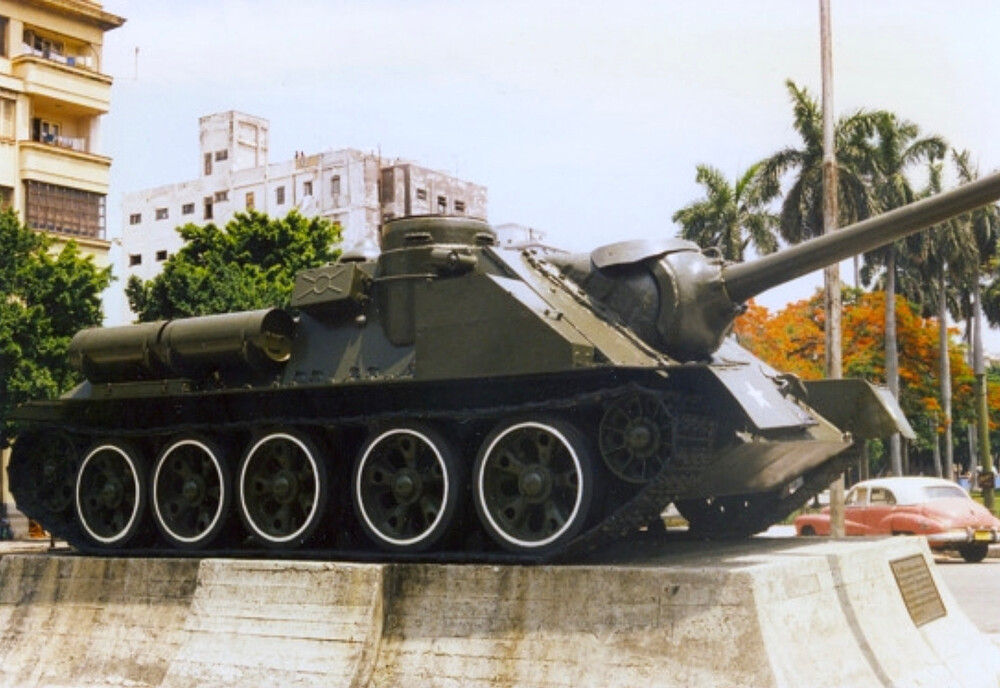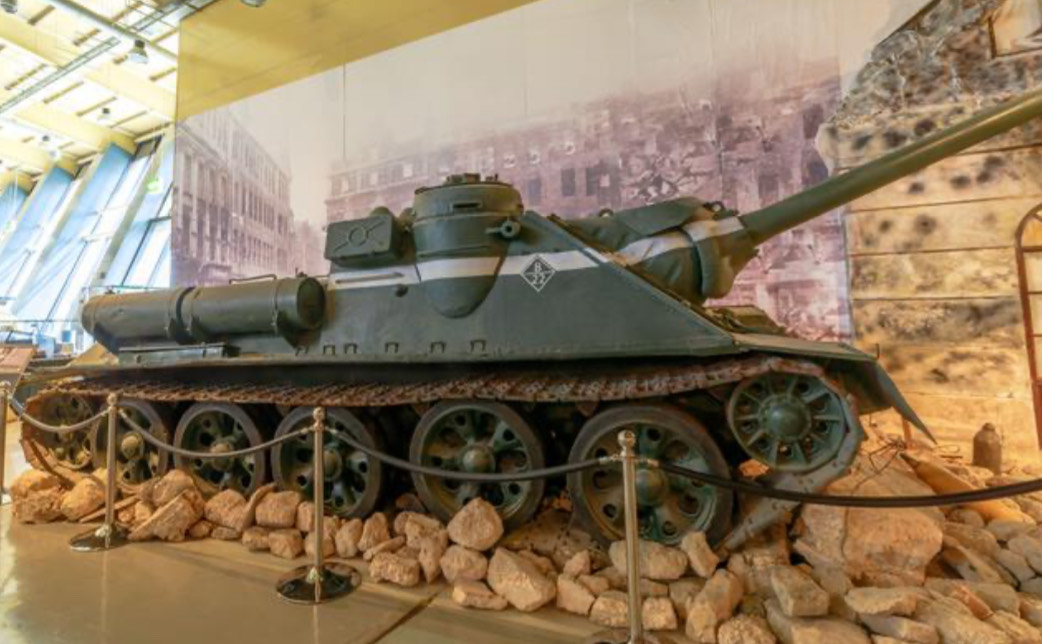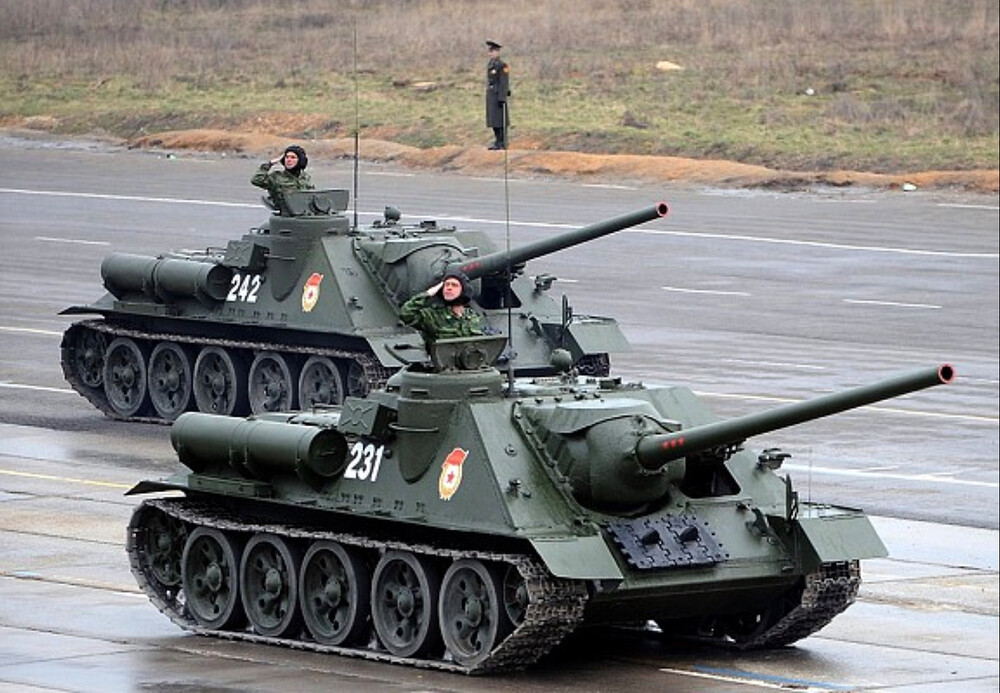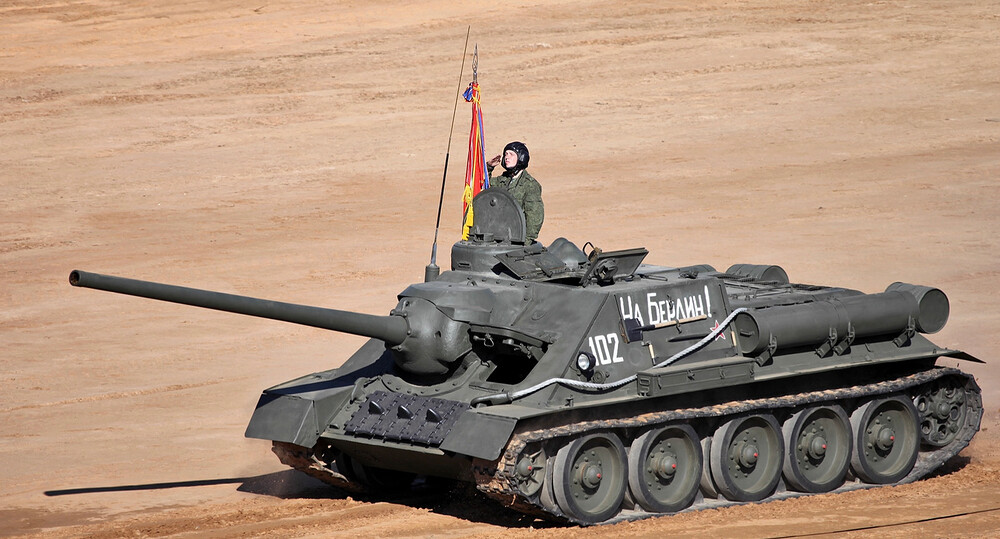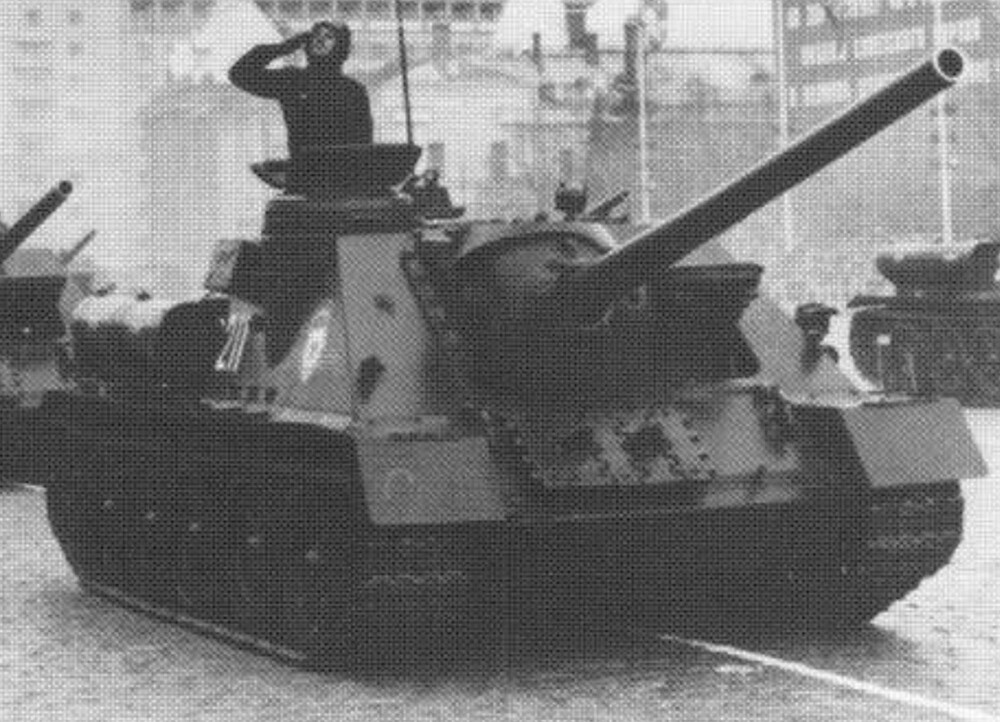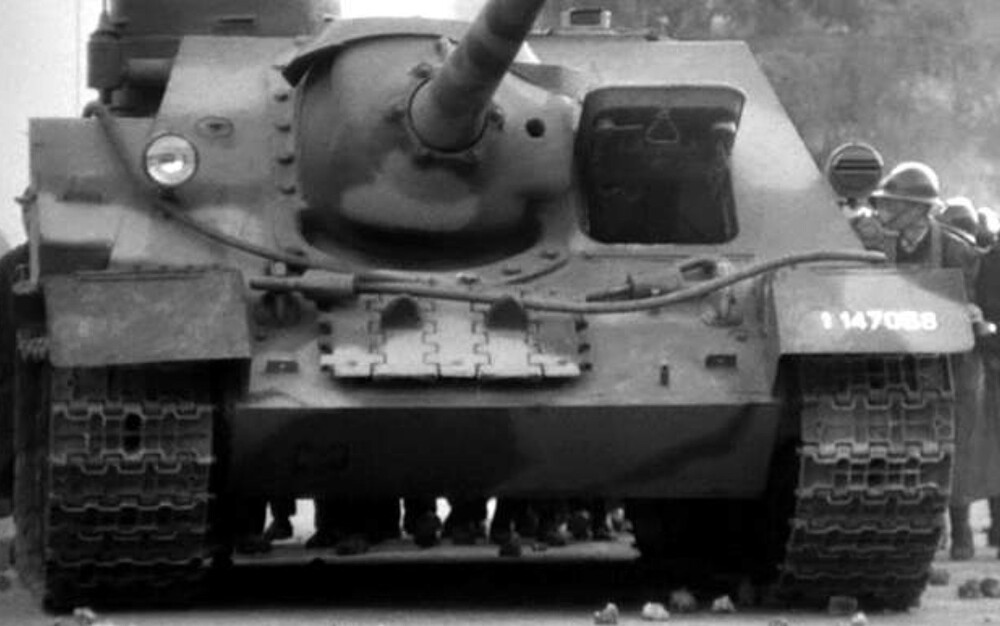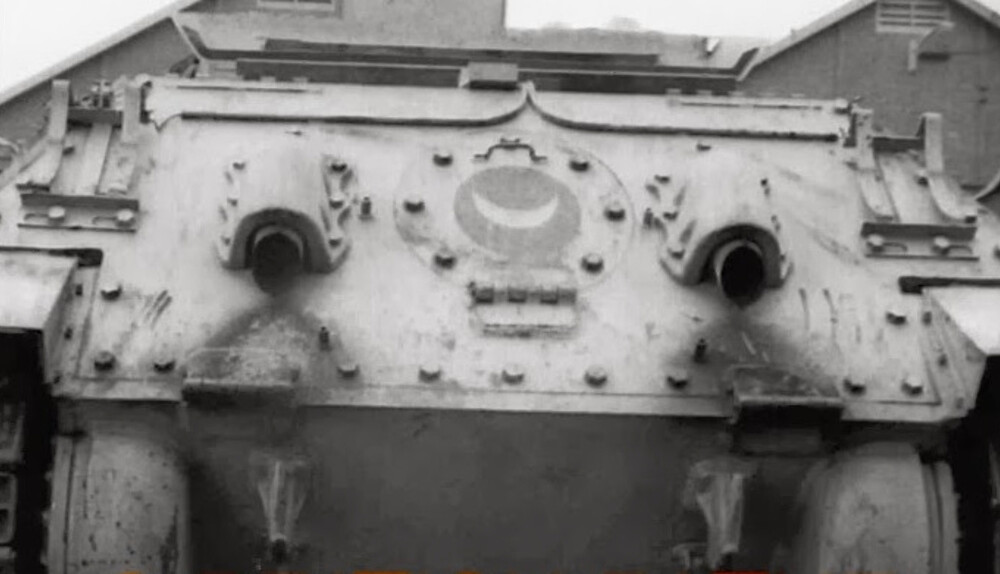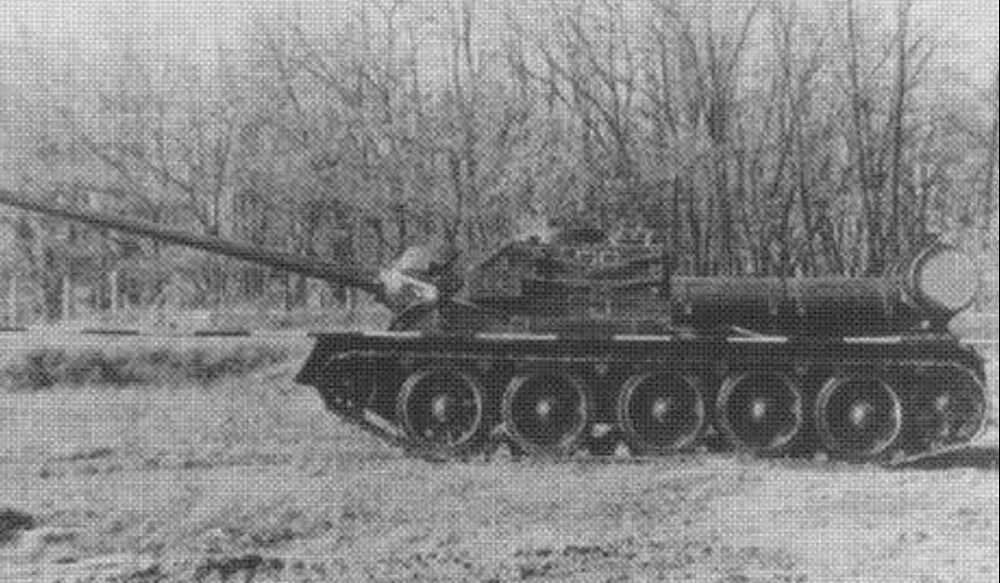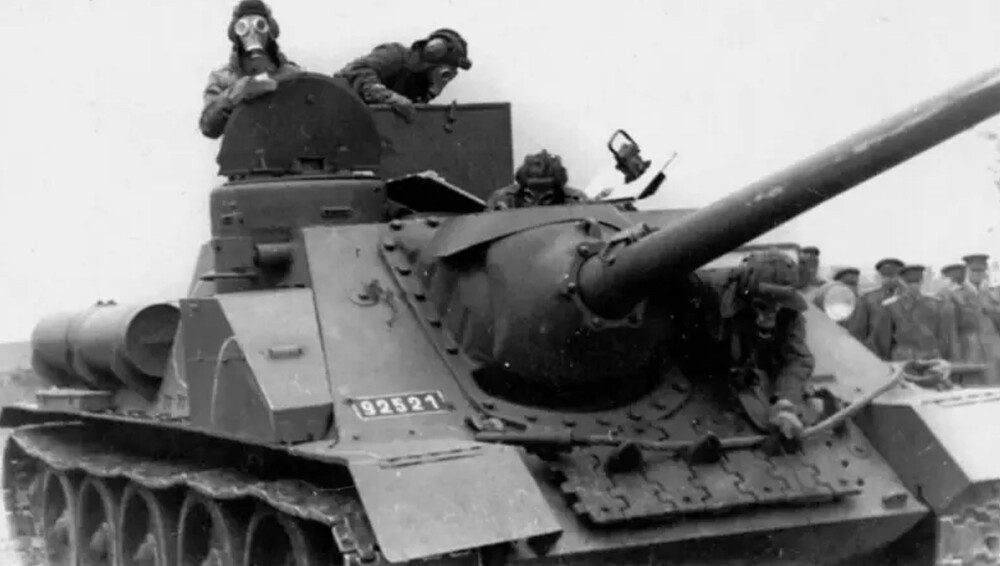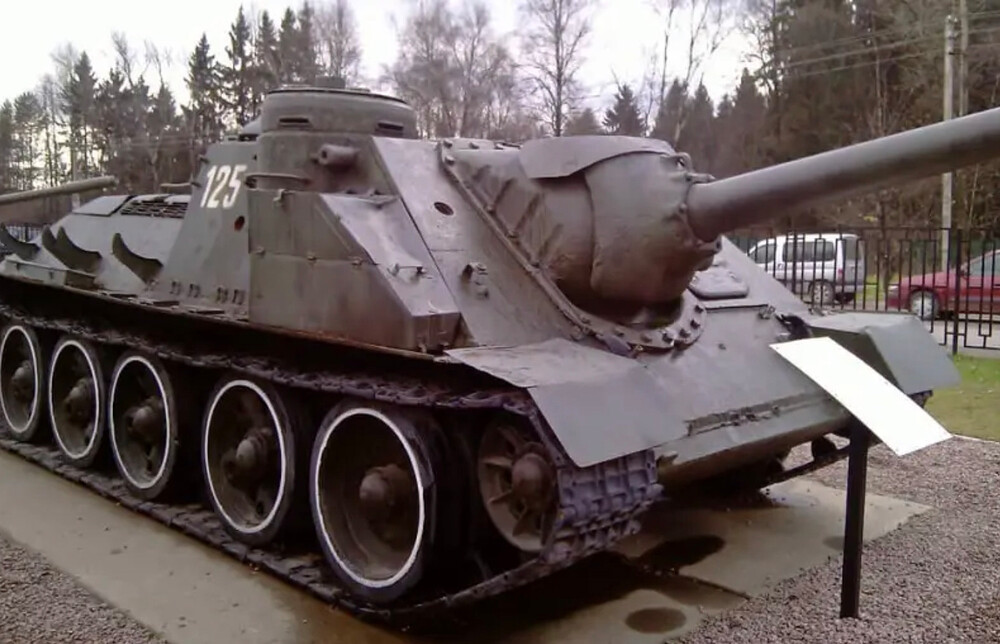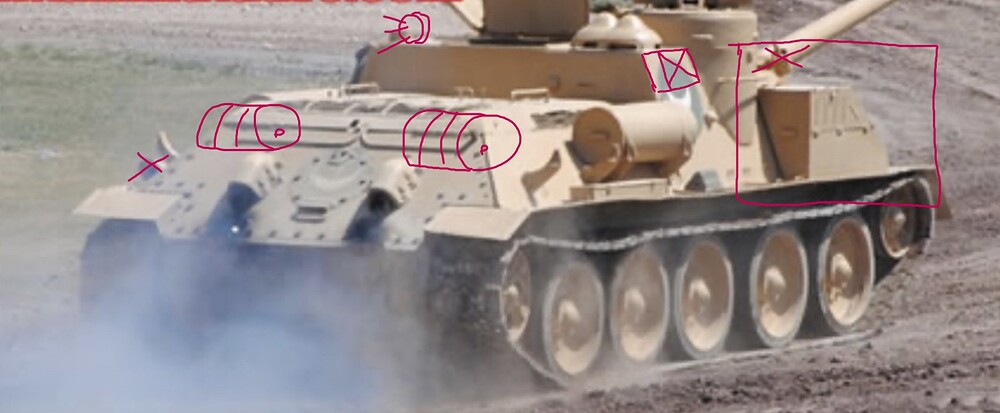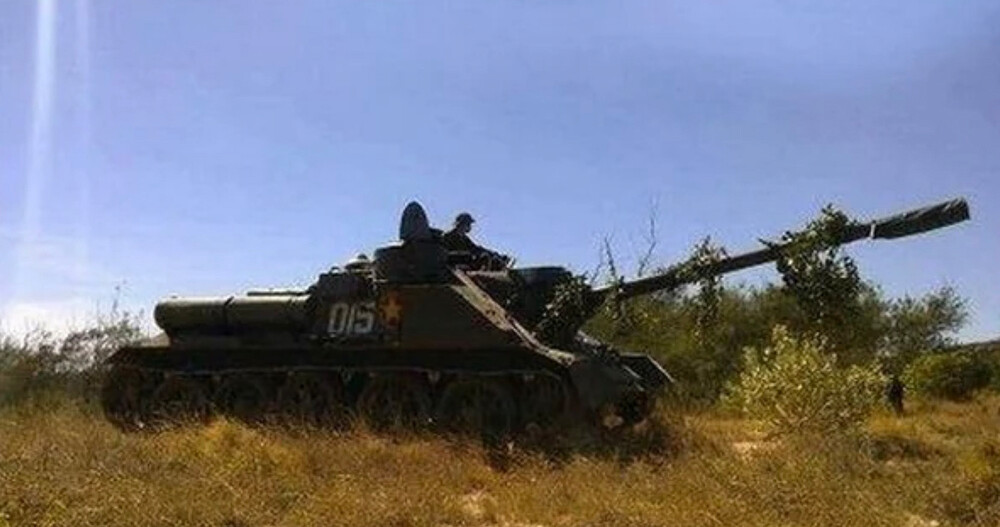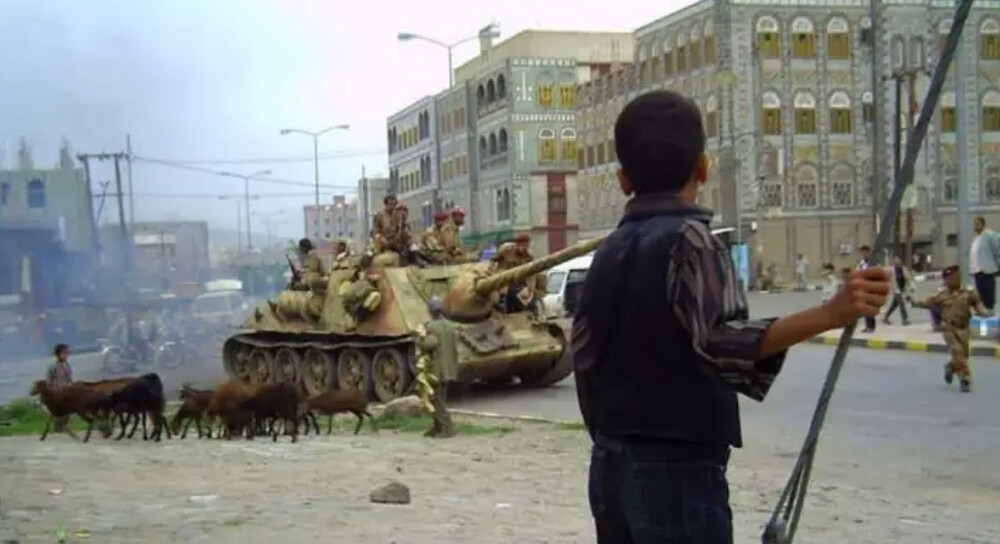[Would you like to see this in-game?]
- Yes
- No
0
voters
How would you like to see SU-100 (1969) in-game?
- As a Tech-Tree Vehicle
- As a Premium Vehicle
- As an Event Vehicle
- As a Squadron Vehicle
- I said No
0
voters
SU-100 Model 1969
The SU-100 (1969), also known as SU-100 Model 1969, represents a post-World War II modernization of the original Soviet SU-100 tank destroyer. This upgrade program was designed to extend the vehicle’s combat viability and operational lifespan deep into the Cold War era. Originally developed during WWII, the SU-100 remained in service with numerous countries, prompting the need for modernization to preserve its battlefield relevance. These updates closely mirrored the T-34-85 Model 1960/69 overhaul programs, with most operators adopting many, if not all, of the enhancements to their SU-100 fleets. Most importantly, it could employ HEAT ammunition developed during the Cold War, significantly improving its anti-armor performance.
History
Spoiler
The SU-100 was a Soviet tank destroyer developed in 1944 to address the need for better anti-tank firepower on the Eastern Front. Built on the reliable T-34 chassis, it was designed as an evolution of the earlier SU-85, replacing the 85 mm gun with a much more powerful 100 mm D-10S cannon. This new gun gave the SU-100 the ability to penetrate the amor of formidable German tanks such as the Panther and Tiger I at distances exceeding 1,500–2,000 meters, giving Soviet forces a much-needed advantage in tank engagements.
The first prototype appeared in early 1944 under the designation Object 138, with production ramping up by autumn. SU-100s began seeing combat by late 1944 and were immediately valued for their combination of firepower, sloped armour, and improved crew layout, including a commander’s cupola for better visibility, something missing from many previous Soviet assault guns and tank destroyers.
After World War II ended, production continued until 1947 in the USSR, while Czechoslovakia built additional units into the 1950s. The SU-100 remained a mainstay in Soviet armoured units for years, serving in reserve formations and training roles well into the 1960s. Even as newer designs like the T-54/55 and T-62 entered service, the SU-100 was considered reliable and cost-effective, especially for less demanding roles. Beyond the USSR, the SU-100 was widely exported and used by many allies and client states. It saw action in numerous Cold War conflicts, including the Suez Crisis, the Vietnam War, and the Arab–Israeli wars, where its gun was still capable of threatening contemporary Western armour under the right conditions.
Distinguishing Features
It is imperative to note that not all SU-100s received every feature that will be mentioned in this suggestion. Equipment varied depending on the refurbishment facility, end user requirements, and export configuration. That said, the modifications that I am about to list should represent the most complete visual depiction of the SU-100 Model 1969.
SU-100 (1969) The Full Visual Package:
- T-55 “Starfish” type road wheels
- Smoke Canisters or 200 Litre Fuel Drums on the rear hull slope
- Improved single piece commander’s hatch
- Antenna moved to the left of the commander’s cupola
- Storage box to the right of the superstructure
- Fuel pump box on the right of the superstructure (sometimes on the left)
- Newer blackout projector to the front on the left slope
- Basic projector to the front on the front slope to the right
- Projector facing the rear on the superstructure roof to the left rear
Engine and Road Wheels
Spoiler
In the 60s T-34-85 tanks were upgraded with the V-2-34M-11 diesel engine, producing 500 hp at 1800 rpm. Some sources say they had 520 hp. This enhancement provided a modest boost in performance and reliability compared to the original V-2-34 engine. In addition, numerous startup assistance upgrades were introduced to help the vehicle start reliably in adverse conditions, particularly in cold weather. Cooling, Lubrication and Air-Filtration systems were also improved. However, it’s unclear whether these SU-100s actually received these engine upgrades, although it’s certainly possible they could have been fitted with such engines as they were obviously interchangeable.
The SU-100 (1969) incorporated T-55-style ‘starfish’ pressed steel road wheels, replacing the original cast or stamped wheels commonly seen on earlier SU-100/T-34-85s. While visually similar to those used on the T-54/55, these wheels were not interchangeable between the tank types due to differences in hub design.
The SU-100 (1969)'s wheel is on the left.
Commander’s Cupola
Spoiler
The tank featured a modified commander’s hatch, a notable improvement over the earlier design. This hatch was a single-piece, forward-opening design and the cupola was equipped with five vision ports. Additionally, the hatch was equipped with a rotating TPKU-2 panoramic sight, providing enhanced visibility and target acquisition. Beyond just visibility, the hatch provided quicker entry and exit, which was crucial in combat emergencies. Its structure also offered better frontal protection while on the move, allowing the commander to observe the battlefield with greater safety during marches or early engagements. In some variants, the R-123 radio antenna mount was relocated, with the original holder removed and the antenna repositioned to the left of the commander’s cupola.
Traffic Lights
Spoiler
SU-100 was equipped with infra-red night driving equipment with passive night vision devices (BVN and TVN-2) and modernized headlights. These were typically FG-100 series projectors, though exact models varied depending on production batches and availability. Some units may have included infrared (IR) filters. The projectors were mounted in three standard positions: on the front left glacis, the right side of the upper front plate, and on the left side of the superstructure roof facing the rear. This setup allowed the driver and commander to navigate and maneuver the tank in low-light or no-light conditions, something that was a significant limitation for earlier SU-100/T-34 variants.
Smoke and Fuel Canisters
Spoiler
The SU-100 (1969) featured the TDP smoke generation system , which utilized MDSh smoke canisters mounted on an inclined stern sheet. These canisters were electrically detonated from inside the tank, allowing the crew to deploy a smoke screen without exposing themselves to enemy fire. This system greatly enhanced the tank’s ability to disengage from combat or conceal movement, especially in open terrain or during retreats. Alternatively two fuel barrels, with a capacity of 200 liters, could be mounted. The tank spare parts kit included a small-sized MZA-3 filling unit, placed in a transport position in a metal box mounted outside on the superstructure.
Additional Gallery
Spoiler
The image above shows a Czech-built SU-100, identifiable by the intercom unit mounted on the left side below the rear fuel tank. I’ve included rough sketches on this image to illustrate the typical features and upgrades seen on an SU-100 (Model 1969). It’s worth noting that the antenna holder on the right side wasn’t always removed on these models.
Conclusion
Spoiler
The SU-100 Model 1969 stands as a testament to the enduring utility of Soviet armored design. Modernized in parallel with the T-34-85 (1969), it continued to serve in front-line and support roles across numerous Cold War and post-Cold War conflicts, from the Soviet–Afghan War in the 1980s to the civil wars in Yemen well into the 21st century. Despite its WWII origins, the tank’s powerful 100 mm D-10S gun, compatibility with modernized ammunition, and mechanical commonality with widely used Soviet platforms allowed it to remain viable far beyond its expected lifespan.
Today, countries like Vietnam maintain these vehicles in pristine reserve condition, and it’s likely that others continue to do so quietly, supported by the abundant global stockpiles of T-54/55-compatible ammunition. The SU-100 (1969) is a symbol of how robust design, smart upgrades, and logistical pragmatism can keep even WWII-era armor relevant on modern battlefields.
SU-100 (1969) – Specifications
Spoiler
- Origin: Soviet Union
- Type: Tank Destroyer
- Crew: 4 (Commander, Gunner, Loader, Driver)
Armament
- Main Gun: 100 mm D-10S tank gun
- Ammunition Types:
- UBR-421D
- 3BM-8
- BK-5M (HEAT)
Mobility
- Engine: V-2-34M V12 Diesel
- Power Output: ~500-520 hp (post-war upgraded version)
- Top Speed: ~55-60 km/h (maybe slower)
Armor
- Front Hull: up to 75 mm, sloped
- Side Hull: 45 mm
- Superstructure: Welded casemate with sloped armor
Dimensions
- Length (w/ gun): ~9.45 m
- Width: ~3.0 m
- Height: ~2.25 m
- Combat Weight: ~31.6 tons
